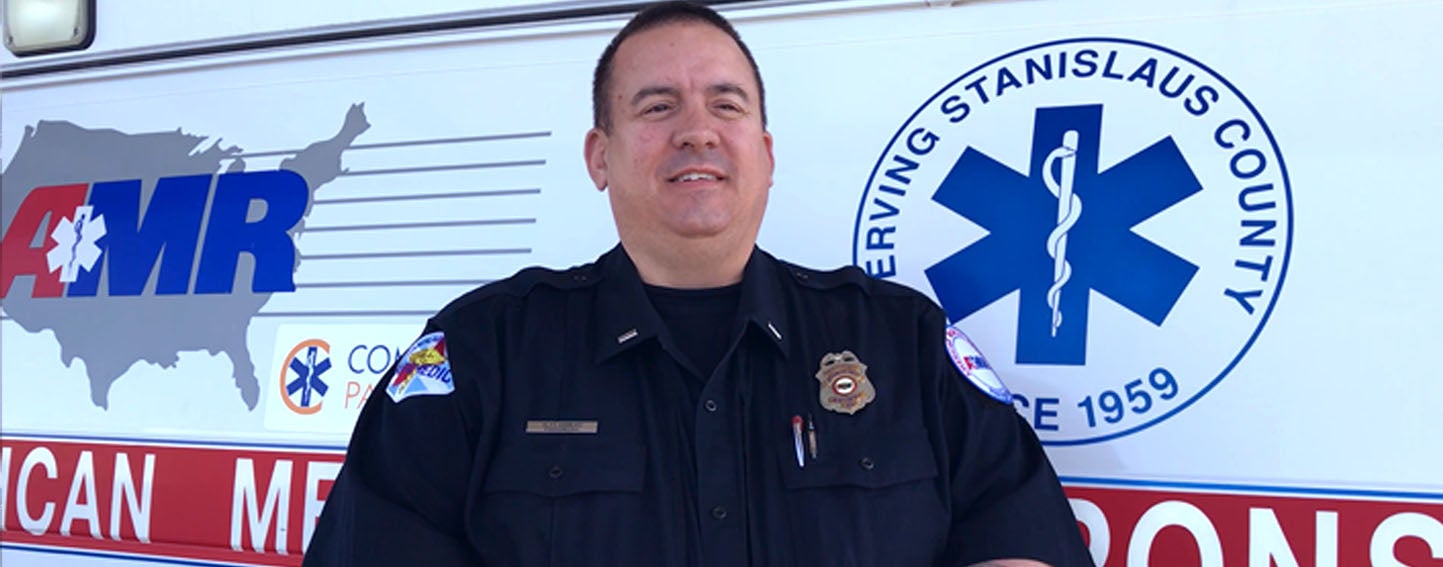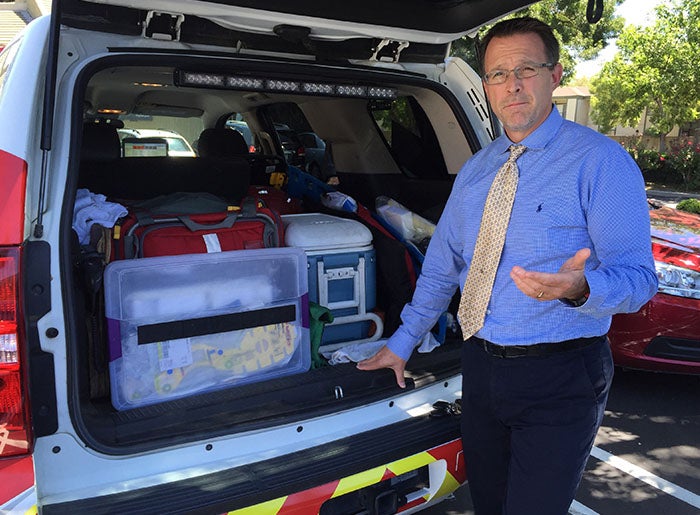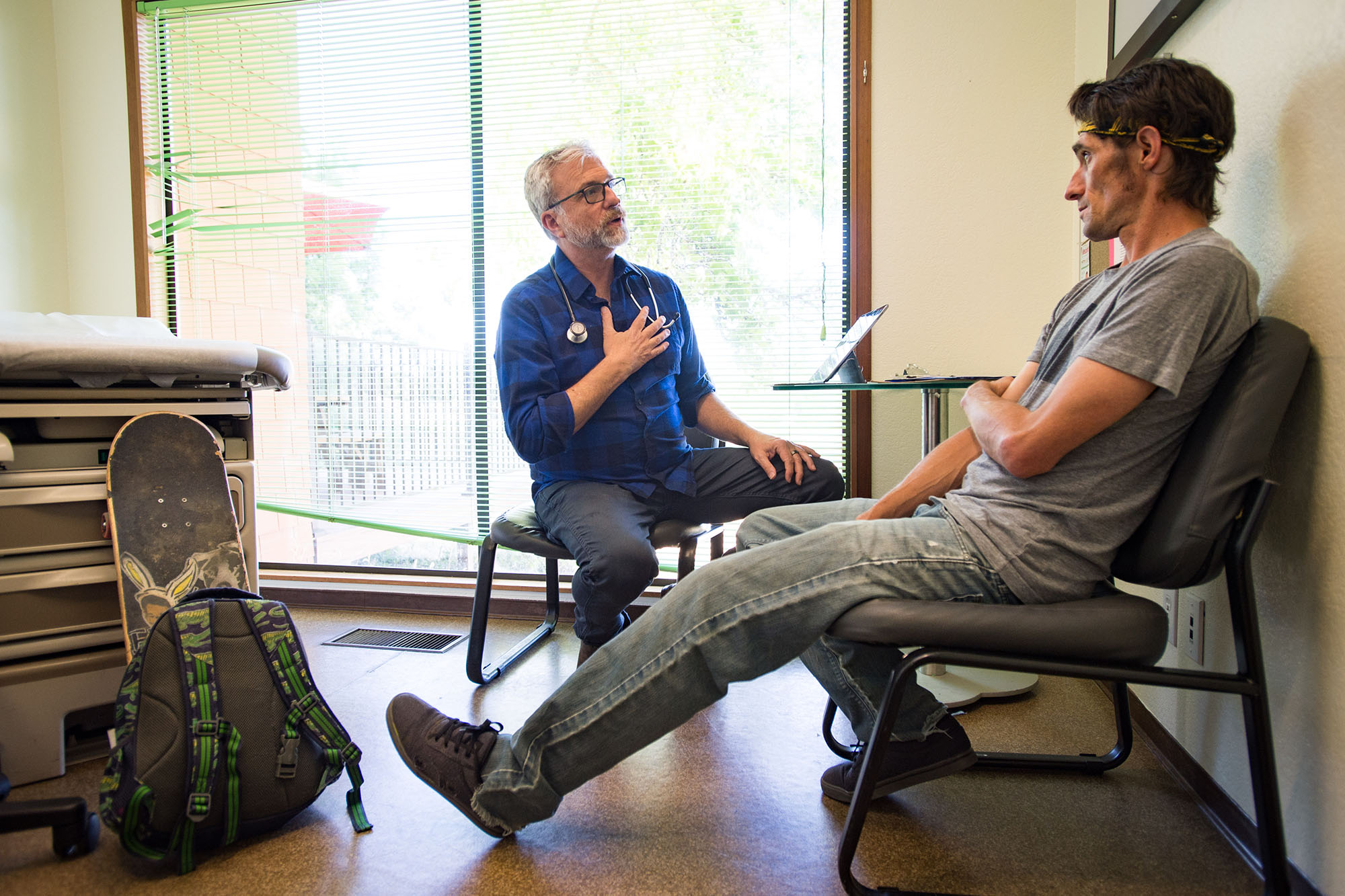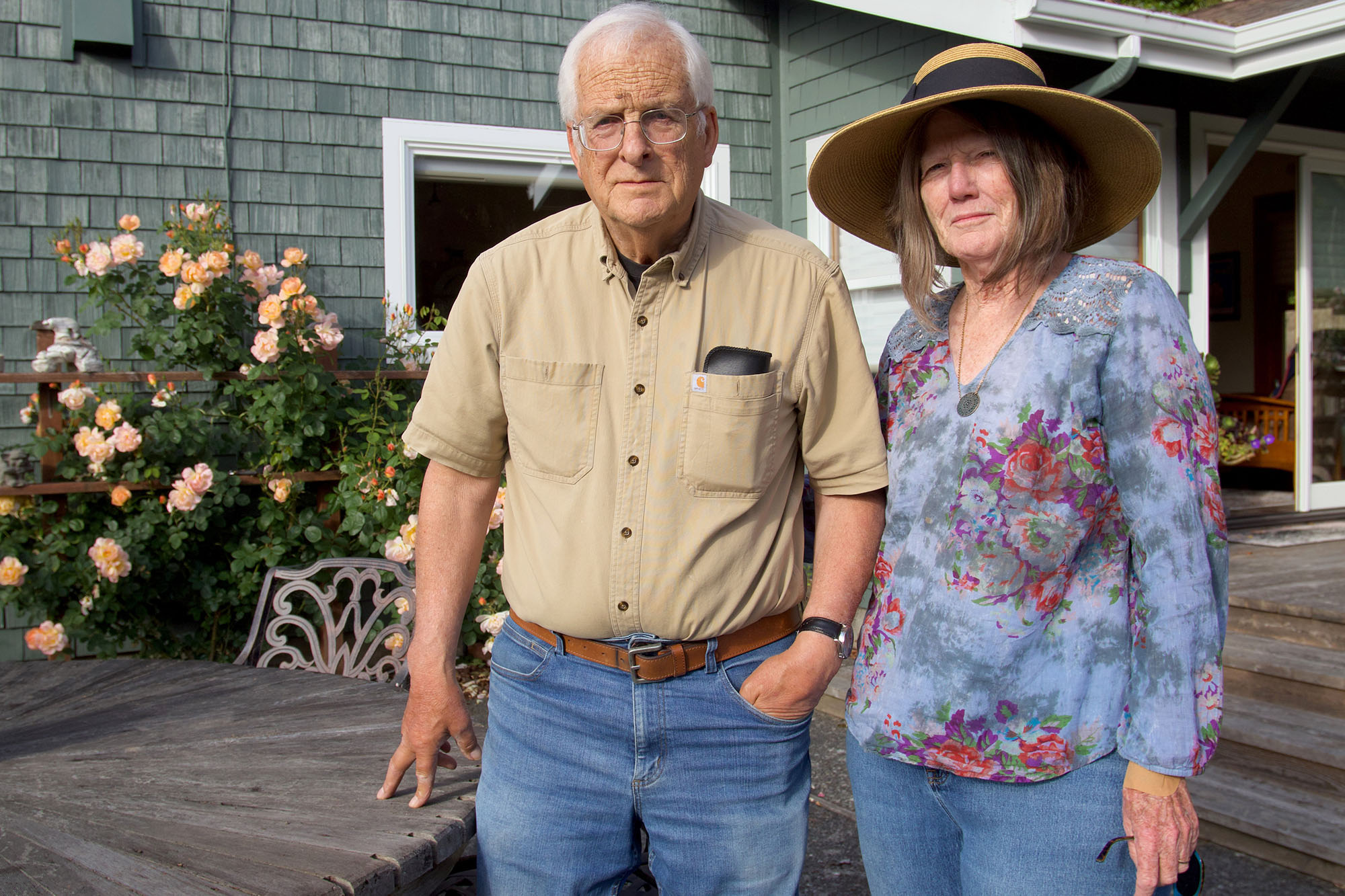

When Dennis Flannery, a community paramedic in Stanislaus County, California, responds to a 911 call about a person in a mental health crisis, he knows the incident may not end with a trip to the emergency room (ER). That’s because Stanislaus is home to a community paramedicine program that transports people in psychiatric crisis past ERs, where they might wait for hours — even days, and instead brings them to a mental health crisis center for prompt, appropriate treatment.
The psychiatric emergency diversion model of community paramedicine, which is also being piloted in Santa Clara and Fresno Counties, “is designed to address a widespread problem of harboring mental health patients in hospital emergency departments across California,” Ken Carlson reported in the Modesto Bee.
“Our hospitals are bursting at the seams, and we have too many people on our streets who are suffering from mental illness,” Kevin Mackey, MD, medical director for Mountain Valley Emergency Medical Services Agency, which oversees the Stanislaus program, told Carlson. Mackey is a passionate proponent of the project. Law enforcement agencies have embraced the project as well because it helps officers return to patrol duties faster instead of tying them up waiting for a handoff in jammed ERs.

Community paramedicine is a locally controlled, community-based, collaborative model of care that leverages the skills of paramedics and emergency medical services (EMS) systems to take advantage of collaborations between EMS and other health care and social service providers. These collaborations enable communities to “address the underlying causes of why someone called 911,” Mattie Quinn reported in Governing.
To prepare for the Stanislaus program, local paramedics received 170 hours of schooling to learn how to screen patients for mental health issues. The training included classroom learning and ER rotations for the paramedics to learn from the county’s mental health crisis intervention team, Carlson reported.
Trained paramedics can assess patients in the field and determine whether they need to be taken to the ER or should be treated by a psychiatric professional at the Stanislaus County Psychiatric Health Facility or Crisis Stabilization Unit. Patients in mental health crises often end up in ERs because people do not know where else to turn for help, and ERs are required by law to assess and treat every patient. But overcrowding and long wait times can prevent patients from receiving the timely mental health care they need.
Watch California community paramedics, including Dennis Flannery, share powerful stories about delivering their innovative brand of care around the state.
A study published in Health Affairs in 2016 found that the number of psychiatric visits to hospital ERs nationwide rose 55% between 2002 and 2011. And “more than twice as many psychiatric patients as medical patients were stuck in hospital emergency rooms for longer than 12 hours,” Amy Ellis Nutt reported in the Washington Post.
The Stanislaus program is yielding positive results. An article coauthored by Mackey in a journal on ER management showed that the special paramedics properly delivered to the ER the program’s first 1,000 patients with medical conditions requiring ER care. Only 12 patients transported to the Psychiatric Health Facility needed to backtrack to the ER for a medical issue.
Janet Coffman, PhD, MA, MPP, a health services researcher and professor at the UCSF School of Medicine’s Institute for Health Policy Studies, has been evaluating community paramedicine projects across the state for five years. “The community paramedicine project in Stanislaus has increased the number of people with mental health needs who are getting the right care in the right place at the right time,” Coffman said in an email to Essential Coverage.
A Concept Pioneered in the Midwest
Minnesota pioneered the recognition of community paramedics as health care providers in 2012 by allowing their services to be reimbursed by Medicaid. Since then, 16 other states have passed laws authorizing and regulating community paramedicine or similar programs.
California has not passed legislation regulating community paramedicine, but local emergency services agencies around the state have been operating pilot projects since 2014. The Office of Statewide Health Planning and Development’s Health Workforce Pilot Projects Program approved the projects, which are in service in 10 localities.
The sites are testing the effectiveness of six different community paramedicine concepts. “Some of the cities enrolled frequent [EMS users] in a case management program; some provided follow-up care for those with chronic conditions until a more permanent caregiver could be put in place; and some provided alternate transport to places like urgent care clinics, sobering centers, or mental health facilities,” Quinn reported.
Coffman’s team of researchers at the Healthforce Center at UCSF have been providing independent evaluation of the pilots (funded by CHCF) since the first one launched in 2015. The most recent evaluation, published in August 2019, concluded that the pilots “are enhancing patients’ well-being, improving the integration and efficiency of health services in the community, and reducing ambulance transports, ED visits, and hospital readmissions.”
The Healthforce evaluators found that the community paramedicine pilots that followed up with patients postdischarge helped reduce inpatient readmissions within 30 days of discharge, saving the state $1.3 million in potential hospital readmissions. Additionally, the pilots that focused on frequent EMS users successfully reduced 911 calls, ambulance transports, and ER visits, saving payers an estimated $1 million in potential costs.
“If California implements community paramedicine on a broader scale, the current EMS system design is well suited to utilize the results of these pilot programs to optimize the design and implementation of proposed programs and to ensure effectiveness and patient safety,” the researchers said.
Essential Coverage will not publish on Monday, December 2. In the meantime, email me your story requests.
Authors & Contributors






